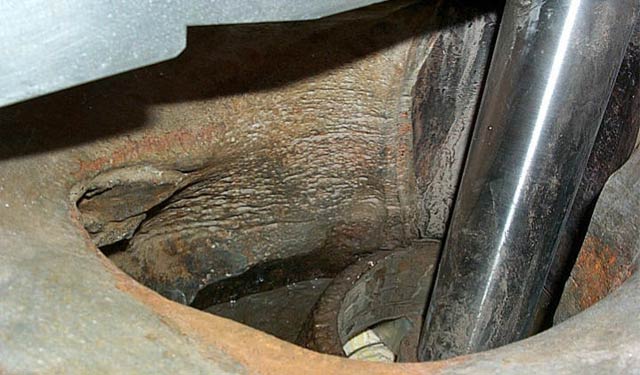
More on FirstEnergy Nuclear Operating Company's bizarre decision to renege on their plea agreement and contradict their basis for restarting the Davis Besse nuclear reactor.
David Lochbaum, a nuclear safety critic with the Union of Concerned Scientists, jumped on the inconsistency in the FENOC position. Lochbaum filed a petition with the NRC to have the license for Davis Besse revoked. The Cleveland Plain Dealer reports:
David Lochbaum is no anti-nuke flake. Lochbaum is a nuclear professional who shared an office with Headless Blogger in the 1980's during restart efforts for TVA's Browns Ferry Unit 2 (coincidentally, Browns Ferry Unit 1 finally restarted this week). His evaluation of the FENOC position has merit.In a petition to the Nuclear Regulatory Commission, the watchdog group demands the agency determine which scenario is correct. Until the NRC makes up its mind, it should order the Toledo-area power plant to shut down, the petition argues.
If the NRC agrees with the controversial new analysis, the agency should suspend operations at the nation's 68 similar reactors because current inspection methods and intervals aren't enough to stop fast-growing corrosion from leading to a reactor rupture. Davis-Besse was two to 13 months from such a catastrophic accident, experts have determined.
If the NRC decides the new analysis is not credible, it should punish the utility for again misleading the agency - something FirstEnergy already has admitted to doing about Davis-Besse's deteriorating condition.
"If the report is right, Americans across the country are exposed to unnecessarily high risk," the petition said. "If the report is wrong, Ohioans are once again duped by a deceitful [FirstEnergy]."
NRC spokesman Scott Burnell said the agency will review the concerns and respond within two weeks.
The utility's new analysis says the pineapple-sized hole, caused when cracks leaked high-pressure reactor coolant, formed in Davis-Besse's massive carbon steel reactor lid in just a few weeks - not four years, as FirstEnergy, the NRC and nuclear industry experts all believed.
The report's conclusion puts FirstEnergy at odds with its own previous determination about how and why the nuclear near-miss happened. In order to earn permission to restart the crippled plant in 2004, the company accepted blame for missing ample and repeated warning signs of corrosion, made massive reforms and paid a record $5.45 million fine to the NRC. Davis-Besse also replaced the corroded lid.
The new analysis, prepared by Exponent Failure Analysis Associates, says the quick-acting corrosion happened while the reactor was running after its last inspection, so there was no way FirstEnergy could have caught the problem.
That argument may help FirstEnergy collect nearly $200 million in insurance money, but it has opened a can of worms with the NRC and may have broad implications for the nuclear industry.
The NRC responded in record time to Lochbaum's filing and FirstEnergy's changing story. The NRC issued a Demand for Information to FENOC this week (the first DFI issued since 1997). In the Demand, the NRC went beyond even what Lochbaum petitioned, putting FENOC's nuclear operating license in jeopardy for not only Davis Besse, but also for FENOC's three other units in Ohio and Pennsylvania.
Analysis
The NRC provided FirstEnergy with strong clues in their Demand for Information as to the legal peril they face as the result of issuing this new report. Based on previous evidence, NRC has basis to believe that the Exponent Report was used by FENOC in a legal proceeding with the knowledge that the postulated scenario was implausible.
The DFI points to FENOC being aware that physical evidence of reactor head erosion in the form of ferric oxide in containment existed for several years prior to discovery of the physical condition of the head. Therefore, although the Exponent Report accurately provides a plausible explanation of how erosion of the Davis Besse head could have occurred, physical evidence is present that proves it occurred by a different mechanism.
This leaves the NRC with a clear mandate to severely punish FirstEnergy again. FENOC may have proven itself to be untrustworthy. Depending on the FENOC response to the Nuclear Regulatory Commission's Demand for Information, the NRC may have no choice but to revoke the Operating Licenses for FENOC's four nuclear reactors.



No comments:
Post a Comment